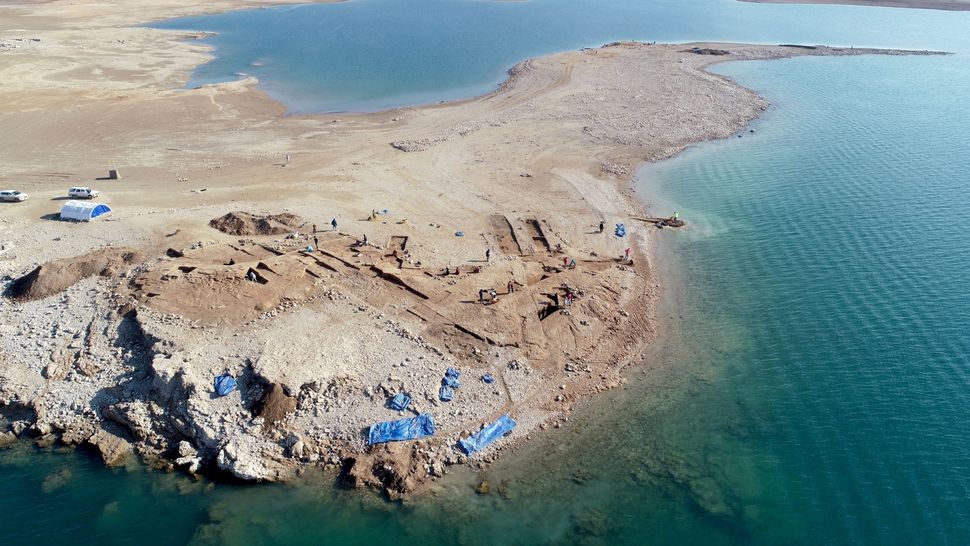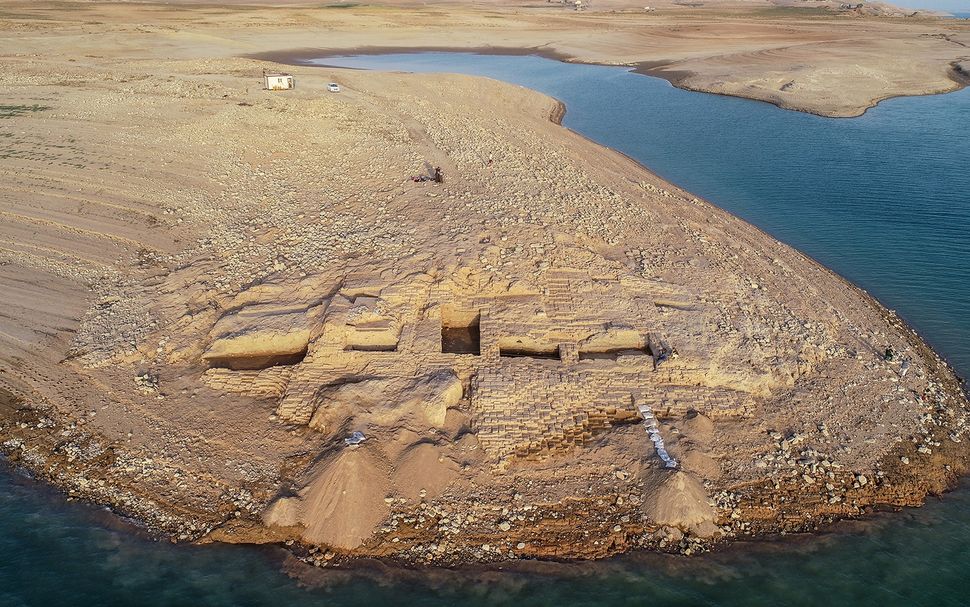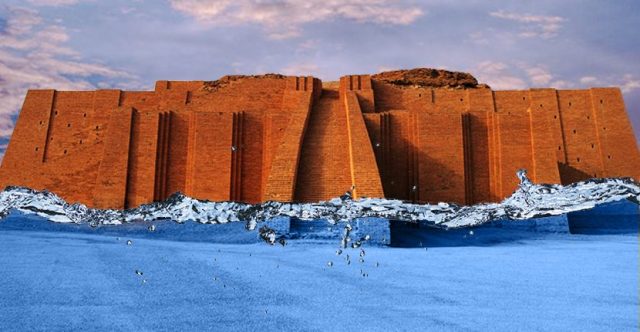Anthropology
Related: About this forumAncient Bronze Age city reemerges from Iraq river after extreme drought
By Patrick Pester published about 3 hours ago
The ancient city was part of the Mittani Empire.

The ancient Bronze Age city at Kemune in Iraq. (Image credit: Universities of Freiburg and Tübingen, KAO)
When an extreme drought caused a 3,400-year-old city to reemerge from a reservoir on the Tigris River in northern Iraq, archaeologists raced to excavate it before the water returned.
The Bronze Age city, at an archaeological site called Kemune, is a relic of the Mittani Empire (also spelled Mitanni Empire), an ancient kingdom that ruled parts of northern Mesopotamia from around 1500 B.C. to 1350 B.C. Researchers have long known of the remains of the city, but they can only investigate them during droughts.
Archaeologists partly excavated Kemune in 2018 and discovered a lost palace with 22-foot-high (7 meters) walls and chambers decorated in painted murals, Live Science previously reported. This time, researchers mapped most of the city, including an industrial complex and a multistory storage facility that likely held goods from all over the region, according to a statement(opens in new tab) released by the University of Tübingen in Germany.
. . .
Kemune is the only known urban center from the Mittani Empire located directly on the Tigris River, suggesting the city controlled crossings at this part of the waterway and may have also been an important connecting point for the empire, Ivana Puljiz, a junior professor of ancient Near Eastern archaeology at the University of Freiburg in Germany who also worked on the excavation, told Live Science in an email.
More:
https://www.livescience.com/ancient-city-in-iraq-emerges-after-drought
~ ~ ~
Earlier article:
Lost Palace of a Once-Mighty Empire Unearthed in Iraq
By Mindy Weisberger published July 02, 2019

An aerial view of Kemune Palace from the west, near the Tigris River in Iraq. (Image credit: University of Tübingen/eScience Center/Kurdistan Archaeology Organization)
When a drought dried up the water in Iraq’s Mosul Dam reservoir, it exposed ruins from an ancient city dating to the Bronze Age.
The city included a palace with walls preserved to heights of 22 feet (7 meters); inside were chambers that had once been decorated with painted murals, archaeologists recently said in a statement.
The scientists dated the site — named Kemune — to the time of the Mittani Empire, a kingdom of the Near East that ruled portions of Syria and northern Mesopotamia from the 15th century to the 14th century B.C. Only three other sites from this period contain Mittani palaces, and all of them were found in the outer reaches of the empire. Kemune alone offers insights into life at the center of the kingdom, according to the statement. [Top 10 Battles for the Control of Iraq]
. . .
Low water levels in the Mosul Dam in 2010 first revealed tantalizing glimpses of the submerged structure, "but we couldn’t excavate here until now," Hasan Ahmed Qasim, co-leader of the excavation and an archaeologist with the Kurdistan Archaeology Organization (KAO) in Duhok, Iraq, said in the statement.
More:
https://www.livescience.com/65850-bronze-age-palace-iraq.html
~ ~ ~
Drought in Iraq Reveals 3,400-yr-old Palace that Astounds Archaeologists
Jul 3, 2019 Nancy Bilyeau

. . .
A joint German-Kurdish team worked on the excavation after a lack of rain and the need to release water from the reservoir at Mosul Dam to relieve drought conditions further south combined last autumn to reveal the palace, said the Independent. “The massive building, preserved up to a height of 7m and with walls 2m thick in places, would originally have been an imposing structure overlooking the Tigris valley atop an elevated terrace, archaeologists said. The Mitannis built a huge mud-brick wall to bolster its western front on the sloping terrain, it is thought.”
. . .
Most of what we know about the empire comes from a handful of sites. Mitanni was one of several kingdoms and small states (another being Hurri) founded by the Indo-Iranians in Mesopotamia and Syria. Although originally these Indo-Iranians were probably members of Aryan tribes that later settled in India, they broke off from the main tribes on the way and migrated to Mesopotamia instead. There they settled among the Hurrian peoples and soon became the ruling noble class.
In a bit of trivia, the world’s oldest horse-training manual also comes from the Mittani; its people were known for their horsemanship and developed lighter, faster spoked wheels for their war chariots, said the Smithsonian.
More:
https://www.thevintagenews.com/2019/07/03/drought-reveals-palace/
Response to Judi Lynn (Original post)
Chin music This message was self-deleted by its author.
Chainfire
(17,757 posts)There may be a lesson there.
Warpy
(114,380 posts)Cities were wiped out by volcanic winters, droughts, rivers that silted up and changed course, earthquakes that changed river patterns, and occasionally something humans caused, like the slow poisoning of the soil that sustained the Sumerians, caused by their success in irrigating it. Warfare certainly didn't help, but it was often an artifact of climate change.
In fact, it has been suggested that the frequent and wide swings in climate in Africa drove human evolution, itself. The argument is persuasive.
As for this city, it pops up every time there is an especially dry year. Unfortunately, that seems to be coming more frequently.
Response to Warpy (Reply #3)
Chin music This message was self-deleted by its author.